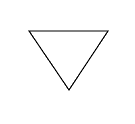

| Hubble Space Telescope Call for Proposals for Cycle 11 | |||
|
|
5.2 Policies and Procedures Regarding
Duplications
Special policies apply to cases in which a proposed observation would duplicate another observation already obtained with HST, or currently in the pool of accepted HST programs.
5.2.1 Duplication Policies
An observation is a duplication of another observation if it is on the same astronomical target or field, with the same or a similar instrument, with a similar instrument mode, similar sensitivity, similar spectral resolution and similar spectral range. It is the responsibility of proposers to check their proposed observations against the catalog of previously executed or accepted programs.

If any duplications exist, they must be identified in the `Observation Summary' section of the proposal (see Section 8.14) using the keyword `DUP' (see Table 8.1), and justified strongly in the `Justify Duplications' section of the proposal (see Section 8.19) as meeting significantly different and compelling scientific objectives.
Any unjustified duplications of previously executed or accepted observations that come to the attention of the peer reviewers and/or STScI could lead to rejection during or after the Phase I deliberations. Without an explicit review panel or TAC recommendation to retain duplicating exposures, they can be disallowed in Phase II. In these cases, no compensatory observing time will be allowed and the associated observing time will be removed from the allocation.
ACS Duplications of WFPC2 or STIS imaging
ACS is expected to have imaging capabilities superior to WFPC2 and STIS for many purposes. Nonetheless, ACS proposers should note any duplications of previously approved or executed WFPC2 or STIS imaging exposures that lie in their fields, and justify why the new ACS observations are required to achieve the scientific goals of the project.
Snapshot Targets
The following policies apply to snapshot targets, in addition to the duplication policies already mentioned:
- Snapshot targets may not duplicate approved GO or GTO programs in the same cycle.
- Snapshot observations may not be proposed that duplicate snapshot observations that were approved in Cycle 10, independent of whether or not they have executed.
- Snapshot targets may be proposed that duplicate snapshot observations that were approved in Cycles 9 or earlier, if they have not yet executed. If the previously approved observation executes after the Phase I deadline, then the new observation will be disallowed (unless there is an explicit panel/TAC recommendation to retain the exposure even if it is a duplication).
GTO Observations
Under NASA policy, GTO programs (see Section 3.11) are protected against acquisition by GOs of duplicate observations. Proposed GO observations that are judged to infringe upon this protection will be disallowed. However, the duplication protection is as specifically defined above; entire classes of objects or broad science programs are not protected. The GTOs are entitled to revise their programs after each cycle of GO selection, but they in turn may not duplicate previously approved GO programs. GTOs may not modify their programs in the time interval between the publication of the GTO/GO catalog in each cycle and the final submission of the Phase II GO programs selected for that cycle. The protection of each observation is in force throughout its proprietary data-rights period (see Section 5.1) and then expires.
Early-Acquisition Images
Occasionally it may happen that a proposer requests an early-acquisition image (see Section 5.2.1 of the HST Primer) that is already in a GTO program, and would be protected according to the NASA policies outlined above. If an early-acquisition image is determined to be in conflict with a protected GTO image, then the GO-requested image may still be permitted, but may be used only for acquisition purposes.
5.2.2 How to Check for Duplications
To check for duplications among the observations that you wish to propose, please use the tools and links on the HST Data Archive Web Page. Use one of the following three options:
- Use the HST Duplication Checking Web Form.
- Use the Duplication Check Screen in Starview, which is available for download from the Starview Web Page (see also the introductory text in Section 7.2.1 of the HST Primer).
- Use the Planned and Archived Exposures Catalog (PAEC). It contains summary information about exposures in ASCII format and can be browsed with any text editor. It is normally updated monthly, but will be kept fixed between the release of this Call for Proposals and the Phase I deadline.
Please make sure that you are either searching in the HST duplication table (automatic if you use the Duplication Checking Web Form or the Starview Duplication Check Screen) or the PAEC. Other archive tables, such as the science table or the ASCII format Archived Exposures Catalog (AEC) do not include exposures that have been approved but have not yet executed, and are therefore not suitable for a complete duplication check.
|
Space Telescope Science Institute http://www.stsci.edu Voice: (410) 338-1082 help@stsci.edu |